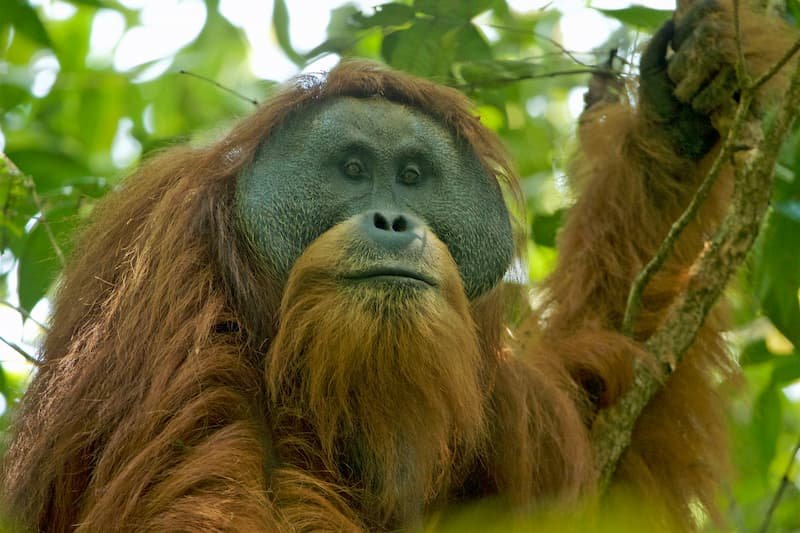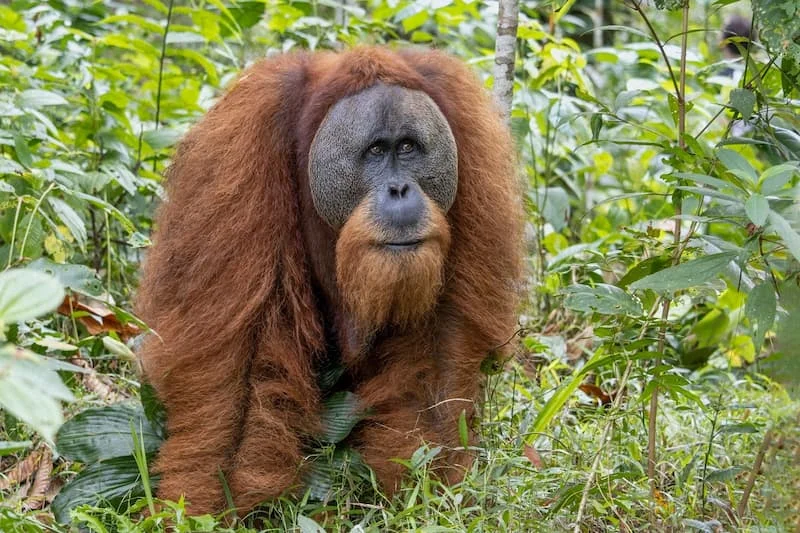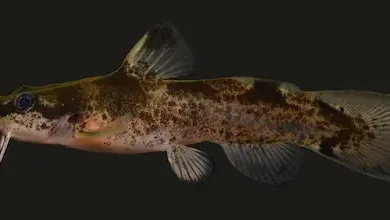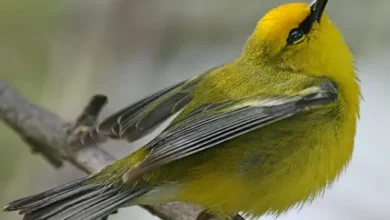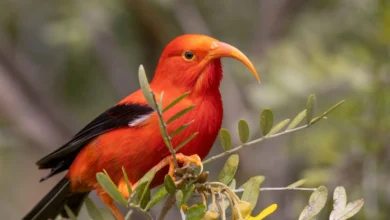Orangutans of Sumatra: Deep Dive into the Sumatran and Tapanuli Orangutans
Introduction
Orangutans are the only great apes native to Asia, and within Sumatra two critically endangered species exist: the Sumatran orangutan (Pongo abelii) and the recently recognized Tapanuli orangutan (Pongo tapanuliensis). This in‑depth article explores their biology, behavior, habitat, threats, and conservation — all centered on the Sumatran Tapanuli orangutan focus keyword.
Origins and Taxonomy
The Sumatran orangutan (Pongo abelii) has long been known, endemic to northern Sumatra. In 2017, researchers described the Tapanuli orangutan as a distinct species based on morphology, genetics, and behavior. Though geographically close, the Tapanuli ape is genetically closer to the Bornean orangutan, diverging around 3.4 million years ago Wild Focus Expeditions+13One Earth+13National Geographic+13Orangutan Conservancy+10National Geographic+10Nature+10. The name Pongo tapanuliensis refers to the three districts of South, Central, and North Tapanuli where this species is found Cell+1Mongabay+1.
Physical Characteristics
Sumatran Orangutan (Pongo abelii)
Sumatran orangutans generally appear lighter in coloration than Bornean orangutans, with longer, reddish‑orange fur, narrow faces, and distinctive facial beards in adult males Orang Utan Republik Foundation. Males weigh around 70–100 kg and stand about 137 cm tall; females are noticeably smaller (around 40–50 kg, ~110 cm) TIME+14Wikipedia+14Orang Utan Republik Foundation+14.
Tapanuli Orangutan (Pongo tapanuliensis)
The Tapanuli orangutans share the lighter fur tone of the Sumatran species but feature frizzier, thicker hair, flatter and wider facial features, smaller skulls, and prominent moustaches and beards in flanged males. They also have a suite of morphological differences (smaller molars, narrower palate, facial depth metrics) that distinguish them scientifically ScienceDirect+15Wikipedia+15New England Primate Conservancy+15.
Behavior and Social Structure
Both species are semi‑solitary arboreal primates, spending nearly all their lives in tree canopies. Mothers with offspring form the largest stable social units; males tend to be solitary Orang Utan Republik Foundation.
Social differences
Sumatran orangutans are somewhat more social than Bornean counterparts, occasionally forming feeding groups or “travel parties,” particularly when fruit resources are abundant. Tapanuli orangutans, living in habitat with lower fruit density, exhibit grouping behaviour similar to Bornean individuals: smaller average female party-size and less fission‑fusion dynamics pmc.ncbi.nlm.nih.gov+1greenhillbukitlawang.com+1.
Reproduction
Female orangutans reach sexual maturity between 10–15 years; they have a long interbirth interval (≈ 8–9 years), producing only 3–4 offspring in a lifetime. Males mature similarly, but “flanged” males with full secondary features may take decades to appear Orang Utan Republik Foundation+1Orangutan SSP+1. This slow reproductive rate makes populations extremely vulnerable to decline.
Calls and signals
Tapanuli male long‑calls differ acoustically from both Sumatran and Bornean calls—they have higher frequency, longer duration, and more pulses—suggesting behavioral divergence as well Orangutan SSP+2Wikipedia+2Orangutan SSP+2.
Diet and Feeding Strategies
Fruit comprises the bulk of the orangutan diet, though both species also eat leaves, bark, insects, buds, and occasionally small animals. They have adapted behavioral and tool‑use skills to process tough or toxic foods New England Primate Conservancy.
Unique to Tapanuli
Tapanuli orangutans include unusual items in their diet such as certain caterpillars, conifer cones, and seeds of plant species not eaten by other orangutans, a reflection of their high‑elevation Batang Toru ecosystem Orangutan Outreach+9New England Primate Conservancy+9Wikipedia+9. They remain strictly arboreal: no ground‑travel observed during thousands of observation hours, likely due to local predators like Sumatran tigers and clouded leopards Wikipedia.
Habitat and Distribution
Sumatran Orangutan
Found in fragmented forest in northern Sumatra—primarily the Leuser Ecosystem in Aceh and North Sumatra provinces, including Gunung Leuser National Park and Bukit Lawang region near Medan Wikipedia+3Wikipedia+3Wikipedia+3.
Tapanuli Orangutan
Confined exclusively to the Batang Toru Ecosystem, south of Lake Toba in North Sumatra, covering roughly 1,000 to 1,200 km² and divided into three forest blocks separated by fault lines and roads One Earth. This narrow-range habitat makes the species extremely vulnerable.
Historically, Tapanuli orangutans occupied a much wider lowland range, but habitat destruction and hunting likely pushed them into upland refuges by the mid‑20th century Mongabay.
Population Status and Conservation Status
As of recent estimates:
-
Sumatran orangutans: about 14,000 individuals remain in the wild Wikipedia+2Wikipedia+2Wikipedia+2.
-
Tapanuli orangutans: fewer than 800 individuals—making them the rarest great ape species on Earth Orangutan Foundation+6Wikipedia+6National Geographic+6.
Both species are listed as Critically Endangered on the IUCN Red List. Orangutans have declined dramatically due to deforestation, habitat fragmentation, hunting, and the illegal pet trade WikipediaSmithsonian’s National ZooWikipediasumatranorangutan.org.
Major Threats
Habitat Loss & Fragmentation
Rapid expansion of palm oil agriculture, logging, mining, and infrastructure (especially in the Batang Toru region) has decimated primary forests. Selectively logged or secondary forests support only 30–50% of orangutan density compared to pristine forest Orangutan SSP. Tapanuli’s main habitat is threatened by a proposed hydroelectric dam that would bisect the only intact forest corridor linking subpopulations Nature.
Hunting and Conflict
Human‑orangutan conflict and retaliatory killing persist, particularly outside protected zones. Hunting and illegal pet trade result in mothers being killed and infants captured Conservation Biologysumatranorangutan.orgWikipedia.
Small Population Effects
Tapanuli populations show signs of inbreeding, with genetic diversity diminishing, increasing risk of extinction due to demographic stochasticity and low reproductive rate Orangutan SSPNatureWikipedia.
Relocation Impacts
Recent research has shown that relocating orangutans often causes more harm than good: many attempt to return home, suffer nutritional stress, conflict with resident apes, and separation trauma. Nearly one‑third return to their original capture area—even traveling more than 100 km The Guardian.
Conservation Efforts and Programs
Sumatran Orangutan Conservation Programme (SOCP)
Established in 1999, SOCP is the primary organisation working to conserve both P. abelii and P. tapanuliensis through research, habitat protection, rehabilitation and reintroduction of rescued orangutans, community engagement, and policy advocacy Orang Utan Republik Foundation+6Wikipedia+6One Earth+6.
Protected Areas & Corridors
Efforts focus on protecting core habitats like Gunung Leuser National Park for P. abelii and Batang Toru for P. tapanuliensis. Plans also seek to establish wildlife corridors to reconnect the three Tapanuli subpopulations to reduce inbreeding and support gene flow NatureOne EarthOrangutan SSP.
Rehabilitation & Reintroduction
SOCP has rehabilitated over 340 ex‑pet orangutans, reintroducing more than 260 to forests in Bukit Tigapuluh and Jantho Pine Forest reserves—creating new self‑sustaining wild populations within historical range Wikipedia+1Wikipedia+1.
Policy and Advocacy
Conservationists call for moratoriums on development projects (e.g. hydropower) in Tapanuli habitat until more assessment is done. International bodies like IUCN have urged halting projects that threaten this critically endangered species IUCNNature.
Conclusion
The Sumatran Tapanuli orangutans represent unique branches of humanity’s closest evolutionary relatives. With both species critically endangered, their survival hinges on integrated conservation strategies across research, habitat protection, community engagement, and policy enforcement. The Tapanuli orangutan, the rarest great ape, reminds us how fragile species with limited geographic range and slow reproduction can be pushed to the brink. Immediate and sustained conservation action is necessary to ensure that these intelligent, social, and culturally rich primates continue to thrive.

